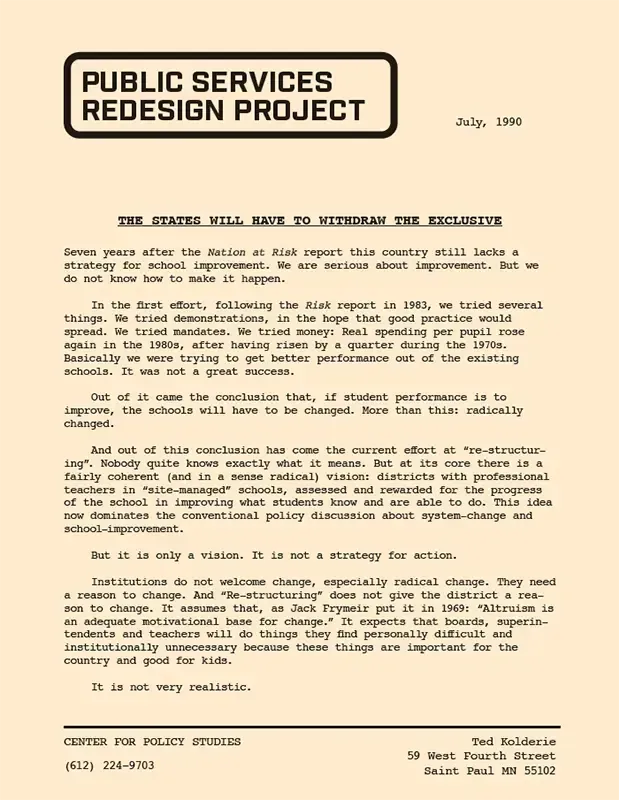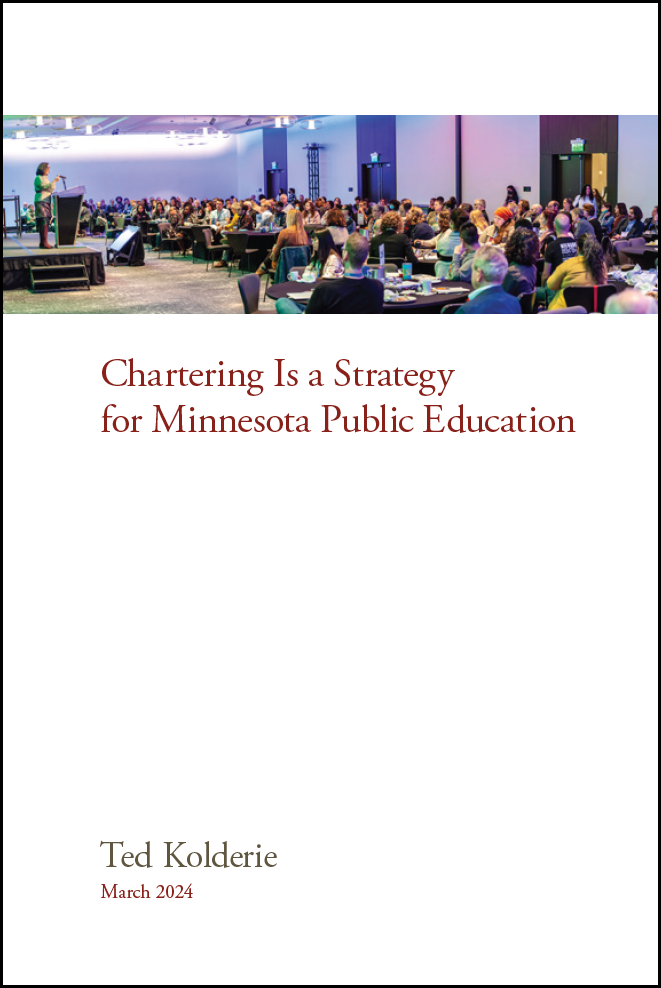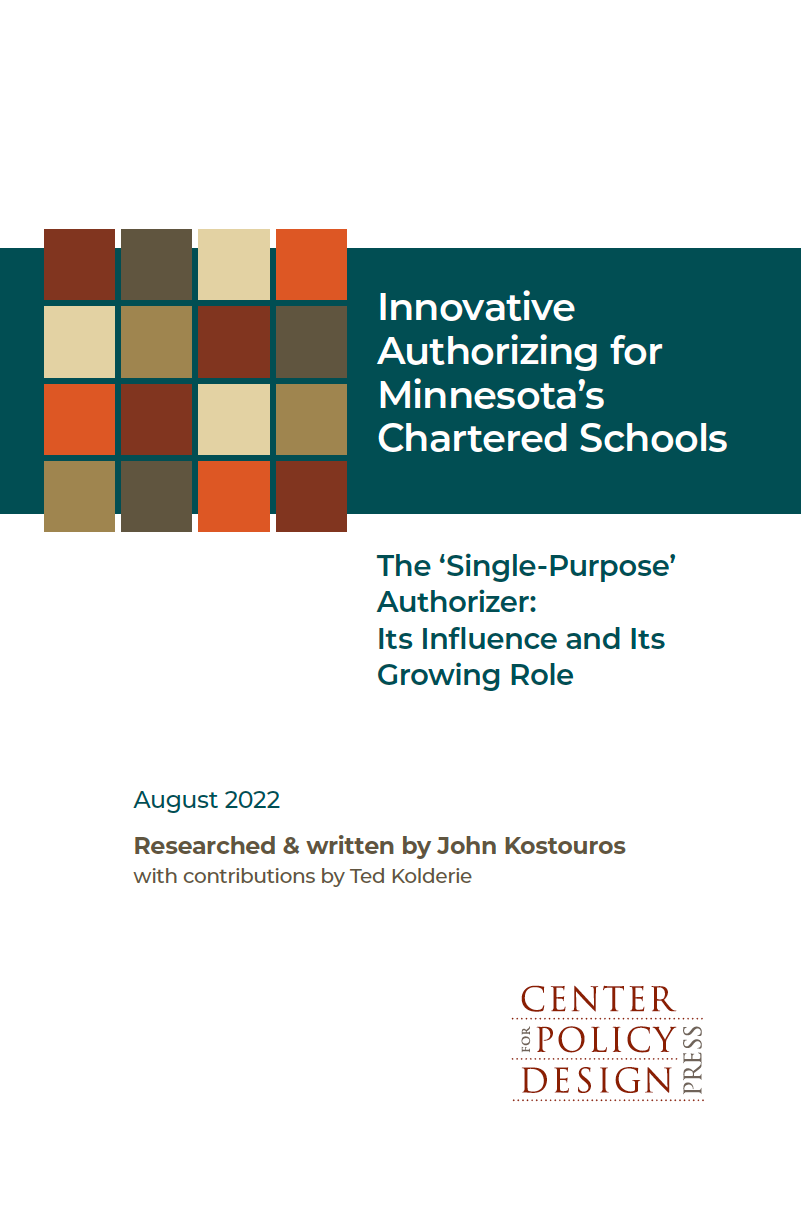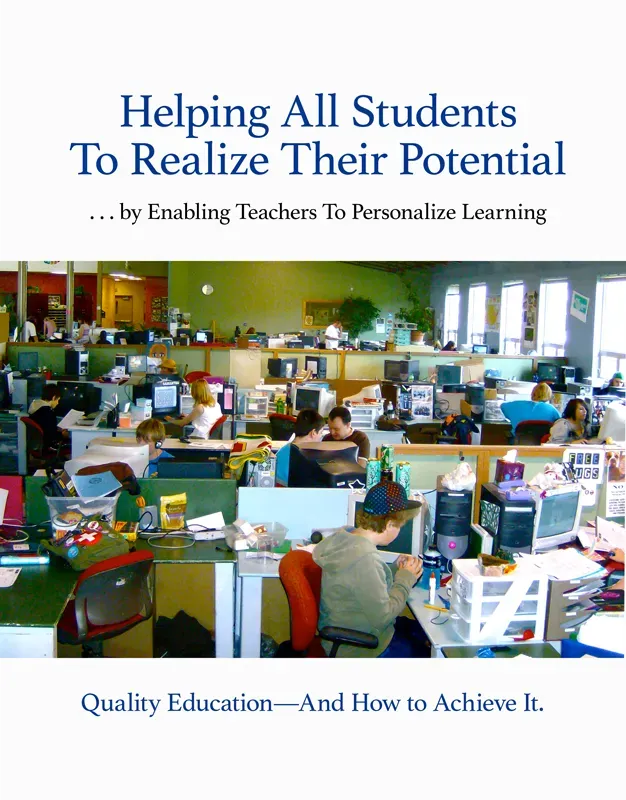PAPERS
Conventional School is Obsolete
This small booklet explains the second sector of public education, created by the Minnesota Legislature in 1991, as essentially the state's strategy for change and improvement. Chartering offers districts, teachers, parents and others the opportunity to create new public schools that try and test different approaches to school and schooling.
The booklet describes the program, and the important innovations that have in fact appeared in this new sector over its now 30-plus years of operation. One example is the application of the 'partnership' arrangement to the organization of a school; creating a professional work-life for teachers.
It makes clear that 'charter schools' is far more than the individual schools themselves.
This booklet is available as a free pdf here.
Conventional School is Obsolete
Our discussion about 'the schools' tends to accept the current way of doing things as 'right' . . . when the question needing to be asked about the institution is whether it works.
Many institutions did great things in their time. Times change; new things appear, making obsolete what was there before.
Public education did great things in its time. Now a new technology of education is developing, making obsolete the traditional form of school and the approach to teaching and learning long accepted as 'right'.
This small booklet describes this innovation. It puts squarely to those in the district sector the question of adopting this 'fundamentally different' model of schooling. It suggests this can be done if the process begins with those now ready and is spread — diffuses — gradually.
Conventional School is . . . Obsolete. is available as a free pdf here.
Innovative Authorizing for Minnesota's Chartered Schools
Our series of booklets on Minnesota's chartering program began with the Guide you see above. Within the program set up by that institutional innovation have come various other innovations.
One of these has to do with the process of authorizing schools. Initially, here and elsewhere, authorizers were existing organizations: universities, foundations, districts, large social-service organizations. Then in 2009 Minnesota's legislature created the 'single-purpose authorizer'. This opened the way for the creation of new nonprofits having no other function than to solicit, receive, review and act on proposals for new schools—and to oversee the schools it approved.
This booklet by John Kostouros describes this innovation with particular attention to one of them, Innovative Quality Schools, and to its innovative way of organizing and financing the work of approval and school oversight; simultaneously broadening its competence and reducing its costs.
Innovative Authorizing for Minnesota's Chartered Schools is available as a free PDF here and use this link to send it to others.
Helping All Students To Realize Their Potential
The central concept in this paper is that, while adults determine what’s taught and tested, students control what’s learned. Any successful effort to improve learning will therefore begin by increasing student motivation.
For this, the strategy must be to personalize learning; to help all students reach their potential. For that to happen, of course, teachers must be able to adapt to the interests and aptitudes of the individual student.

Should Minnesota's Public Schools Be Obliged to Ensure that Students Learn?
Responsive to the initiative from former Justice Alan Page to create a civil right to ‘quality education’, this ‘amicus brief’ written for legislators argues the goal can be reached without a constitutional amendment.
It underscores the implication of Page’s goal of ‘realizing potential’, pointing out that the ‘achievement gap’ would then be the difference between the potential and the performance of the individual student.
Should Minnesota's Public Schools Be Obliged to Ensure that Students Learn? is available as a free PDF here and use this link to send it to others.

Public Services Redesign Project
This memo from the Public Services Redesign project at the Humphrey Institute, suggesting a new way to think about the improvement of public education and distributed nationally, has been called 'the founding document' for the legislation in the states creating a new 'charter' sector in the system.

PYC Alternative School
Innovative forms of public school began to appear in Minneapolis as early as the l960s. Young people not succeeding in the schools were contracted by the district to neighborhood nonprofit organizations. One of these was the PYC School on the lower north side. In 1990 Jim Long, director of the school, wrote this description of the unconventional program needed to help those who through no fault of their own come unprepared for what conventional district schooling expects and requires.
Thank you for reading...



